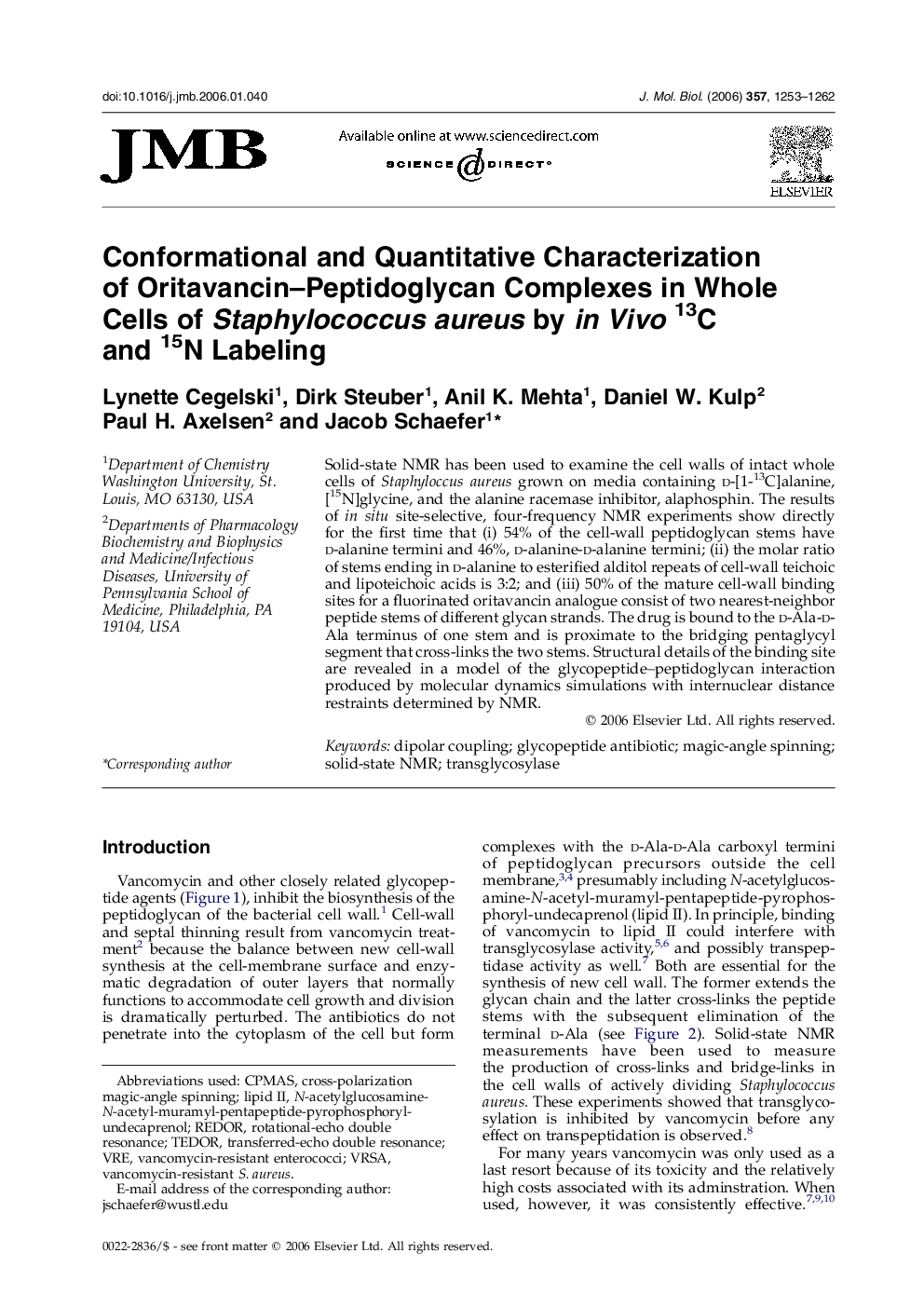| Article ID | Journal | Published Year | Pages | File Type |
|---|---|---|---|---|
| 2189948 | Journal of Molecular Biology | 2006 | 10 Pages |
Solid-state NMR has been used to examine the cell walls of intact whole cells of Staphyloccus aureus grown on media containing d-[1-13C]alanine, [15N]glycine, and the alanine racemase inhibitor, alaphosphin. The results of in situ site-selective, four-frequency NMR experiments show directly for the first time that (i) 54% of the cell-wall peptidoglycan stems have d-alanine termini and 46%, d-alanine-d-alanine termini; (ii) the molar ratio of stems ending in d-alanine to esterified alditol repeats of cell-wall teichoic and lipoteichoic acids is 3:2; and (iii) 50% of the mature cell-wall binding sites for a fluorinated oritavancin analogue consist of two nearest-neighbor peptide stems of different glycan strands. The drug is bound to the d-Ala-d-Ala terminus of one stem and is proximate to the bridging pentaglycyl segment that cross-links the two stems. Structural details of the binding site are revealed in a model of the glycopeptide–peptidoglycan interaction produced by molecular dynamics simulations with internuclear distance restraints determined by NMR.
